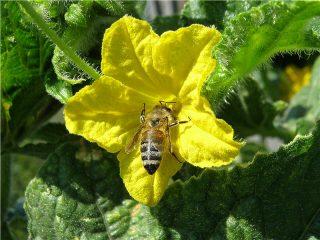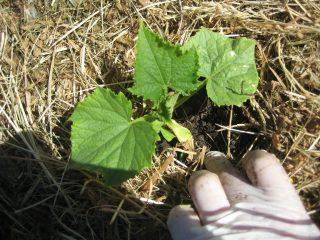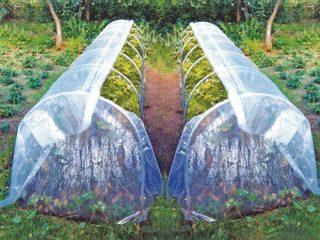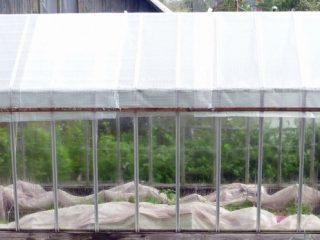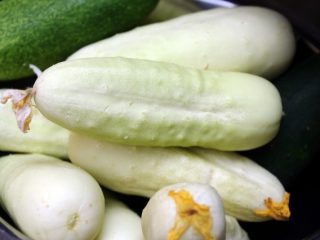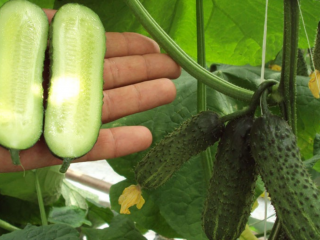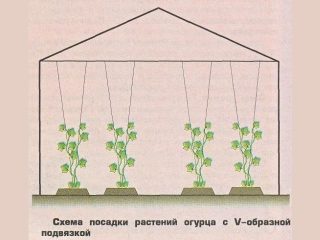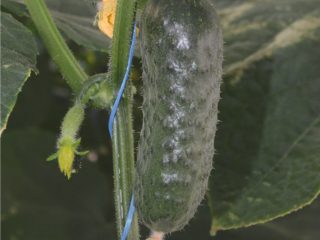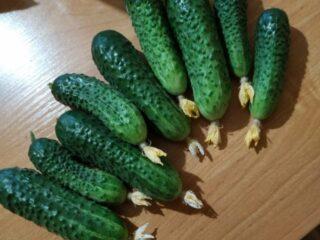Content
Hydroponics is a method of growing cucumbers and other garden crops that allows you to avoid planting them in garden beds. To do this, you need a special nutrient solution enriched with all the substances the plants need in the required proportions. There are purchased systems, but do-it-yourself hydroponics for cucumbers is also simple and quite functional.
Cucumber varieties for hydroponics
A cucumber variety suitable for growing hydroponically must meet several criteria:
- early harvest ripening;
- ability to self-pollinate;
- compact bush form.
Suitable, for example:
- Zozulya;
- Lilliputian;
- Marfinsky;
- Cruise;
- Farmer;
- Favorite;
- Dachny;
- Darling;
- Marina Grove;
- Finger;
- Stork;
- Courage;
- Take a walk;
- Athlete;
- Berendey.
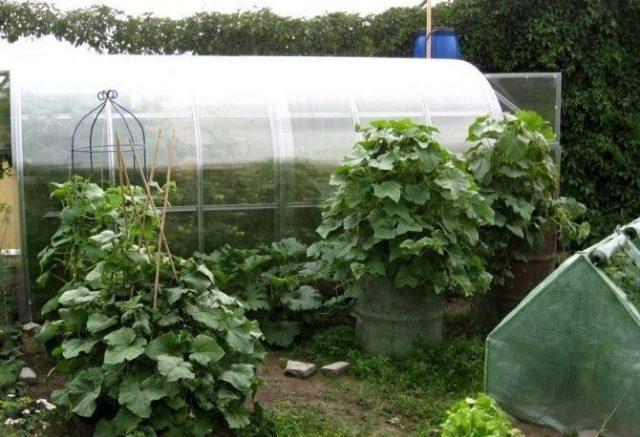
Bush cucumbers are suitable for any “tight spaces”
Advantages and disadvantages of the method
Growing cucumbers hydroponically is a method that has many undeniable advantages compared to “classic” beds:
- formation of powerful plants with strong stems;
- accelerated rates of crop ripening;
- virtually no risk of infection by pathogenic microflora and pest attacks;
- saving time on watering, weeding, loosening and fertilizing, as well as preparing the bed for planting;
- higher yield);
- the ability to assemble the system in a relatively small area (garage, basement or room).
However, there are also disadvantages:
- the harvest of cucumbers completely depends on the correctness of the gardener’s actions, his ability to “balance” all the required indicators in the nutrient solution;
- the need to constantly maintain the temperature at the roots at 22-24 ° C;
- the rather high cost of store-bought systems and “reagents” for the nutrient solution.
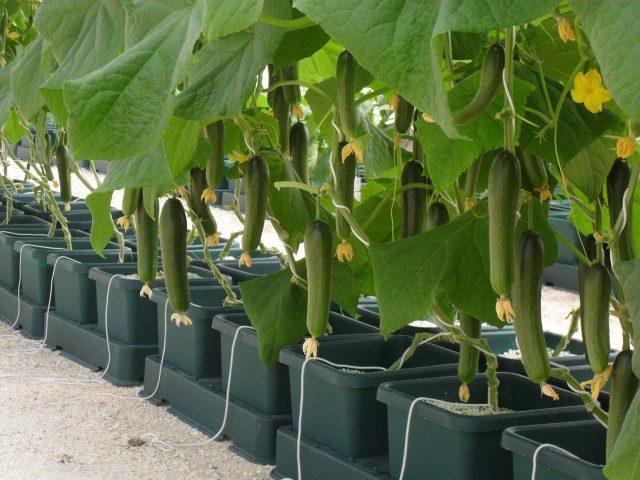
Hydroponic cucumbers look very presentable
The yield of cucumbers in hydroponics
When growing cucumbers hydroponically, an average of 15-20 kg/m² is removed. The specific yield depends on the selected variety or hybrid, as well as the quality of the nutrient solution and the presence of “additives”.
Conditions for growing cucumbers hydroponically
Cucumbers grown in hydroponics need to be provided with 10-12 hours of daylight. There are shade-tolerant varieties and hybrids in which light deficiency does not affect the volume and quality of the harvest, but there are very few of them. For lighting, special phytolamps are used.
If daylight hours increase, the development of cucumbers is “inhibited”, flowering and fruiting are delayed. Because of this, they exhaust their “vitality” prematurely, “grow old” early and produce less harvest than they could.
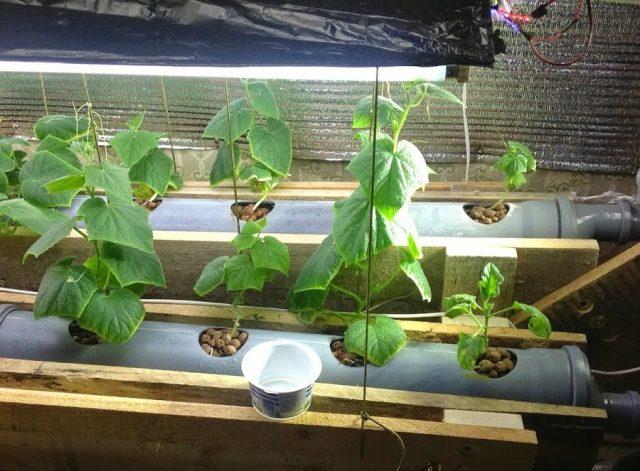
Cucumbers grown in hydroponics do not like shade: if there is a lack of light, they lose flowers and ovaries, and productivity suffers.
Also, optimal conditions for growing cucumbers hydroponically include a temperature in the range of 20-27 ° C and air humidity of about 75%. If the room is too dry, the fruits begin to actively lose water, which does not have the best effect on their appearance and quality. And when the temperature goes beyond the “tolerable” range for the crop (15-42 ° C), hydroponic cucumbers die.
Technology for growing cucumbers hydroponically
A general description of the technology for growing cucumbers hydroponically looks like this:
- Prepare a solution and saturate the seed substrate with it.
- Sow cucumbers, providing them with the required temperature, humidity and “greenhouse effect”.
- Transfer the seedlings into “cubes”, and then onto special mats or into a substrate, also soaked in a nutrient solution, having previously cut holes in them that will act as a drainage material.
How to grow cucumbers hydroponically
It all starts with germination of seeds. This is standard procedure for any crop planted in this way:
- Soak the mineral wool “plugs” well in distilled water, place them in a low, wide container, and place the seeds in them. Sometimes a biostimulant solution (Epin, Zircon, Fitosporin) is used in a proportion of 10 ml per liter of water.
- Cover the container with cling film or a lid.Wait 3-5 days until the first pair of cotyledon leaves appears on the seedlings. At this time, the temperature is maintained at 25-28 °C, the “greenhouse” is removed only for 7-10 minutes a day for ventilation.
- Transfer the open container under the lamp or into a special box. Provide 16-18 hours of daylight, a temperature of 23-25 °C during the day and 20-22 °C at night. Start watering with a nutrient solution diluted 1:1 with water.
After about a week, you need to transfer the “plugs” with cucumber seedlings into larger “cubes” made of the same mineral wool. They are pre-moistened with a nutrient solution diluted in half, which is also used for watering.
Here the seedlings are left for 3-5 weeks at a constant temperature of 22-24 °C. Daylight hours are reduced to 10-12 hours. The maximum planting density is 28 pieces per 1 m².
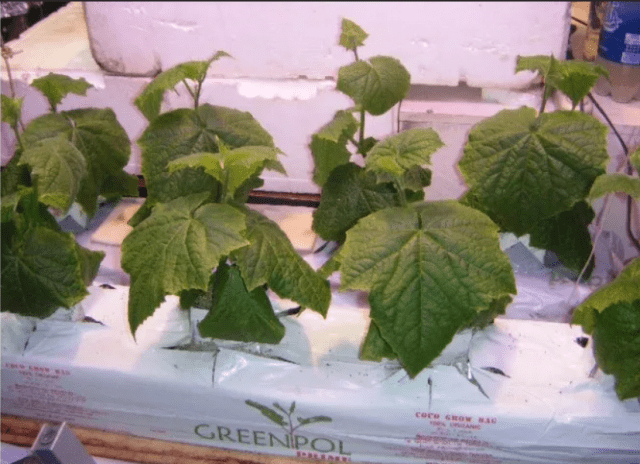
Typically, “plugs” and “cubes” for growing seedlings of cucumbers and other crops in hydroponics are included in the kit
After the specified time, adult cucumber seedlings can be transplanted into a hydroponics installation in special containers or on mats. Plants manage to form a developed root system, a strong stem and 5-6 true leaves. They stretch 23-27 cm in height.
At this stage of development, they are provided with a 24-hour temperature of 22 °C. Once they reach a height of 30 cm, cucumbers need support. They are tied to a trellis.
Necessary materials
Assembling the simplest system for growing cucumbers hydroponically requires:
- capacious plastic containers (preferably black) with a minimum volume of 50 liters;
- foam sheet;
- plastic pots with a large number of holes in the walls;
- pumps (in principle, not only a special one, but also a regular aquarium pump is suitable);
- moisture-intensive “substrate”;
- purchased or homemade nutrient solution;
- plastic tubes or silicone hoses.
System assembly
The intermittent flooding system is best suited for growing hydroponic cucumbers in greenhouses. For home use, a floating platform or drip irrigation is more suitable.
How to make a floating platform:
- Make several holes in the lower third of the container. Insert silicone hoses or plastic pipes into them for aeration. Connect them to the compressor.
- Fill the container with nutrient solution. Place a sheet of foam plastic on top with pre-cut holes according to the number and diameter of pots for hydroponic cucumbers.
- Pour the substrate into the pots and insert them into the holes.
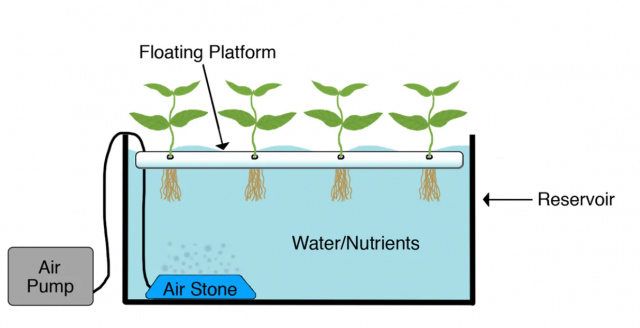
Instead of foam plastic, you can use plywood or a sheet of chipboard
The drip irrigation system for hydroponic cucumbers is a little more complicated:
- Fill the pots with substrate and place them on a tray with a slight slope. Place a container with a nutrient solution under it.
- Apply silicone hoses or plastic tubes to each hydroponic cucumber pot and connect them to a container with a nutrient solution.
- By connecting the pump, provide the necessary pressure so that the liquid constantly flows to the pots. Its excess will be drained back into the container.
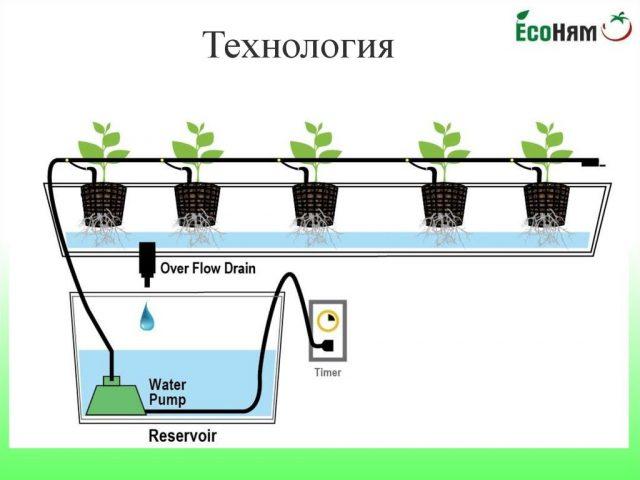
Hydroponics with drip irrigation - closed loop system
Nutrient solution
The base of the hydroponic nutrient solution for cucumbers is plain water. In principle, even tap water will do, but it must first be left to stand for 24 hours or softened in some other way.
The finished nutrient solution for growing cucumbers hydroponically must meet the following parameters:
- pH (acid-base balance) – 5.5-6.2.
- EU (mineralization level) – 2.2-2.7. If there is a shortage of light from late autumn to early spring, it is reduced to 1.7-2.2.
The nutrient solution suitable for growing cucumbers hydroponically includes the following substances:
- sodium or calcium nitrate – 10 g;
- potassium monophosphate – 2.5 g;
- potassium chloride – 1.25 g;
- magnesium sulfate – 2.5 g;
- ferric chloride – 0.125 g.
When preparing a hydroponic solution for cucumbers with your own hands, each ingredient is separately diluted in 500 ml of water. Then, alternately, in random order, pour into a container with 7.5 liters of water, stirring constantly. Finally, add 0.2 g of manganese sulfate and borax and half as much zinc and copper sulfate.
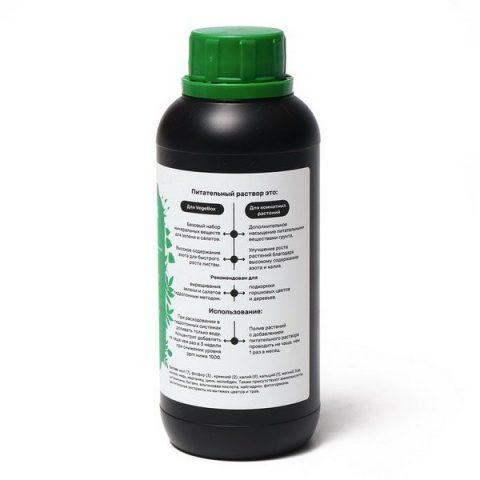
Store-bought nutrient solutions take into account the specific needs of different crops for macro- and microelements
Aftercare
Caring for cucumbers grown hydroponically includes the following activities:
- Watering. Continues throughout daylight hours. With poor watering, hydroponic cucumbers often become deformed.
- Garter. As they grow, the stems are fixed on a support so that they do not shade each other.If the shoots extend more than 2 m, their tops are pinched so that they do not create an unwanted shadow for hydroponic cucumbers.
- Spraying. When grown on an industrial scale, “fog” sprayers are used, creating a suspension of tiny droplets in the air. At home, hydroponic cucumbers can be sprayed manually every evening using a fine spray bottle.
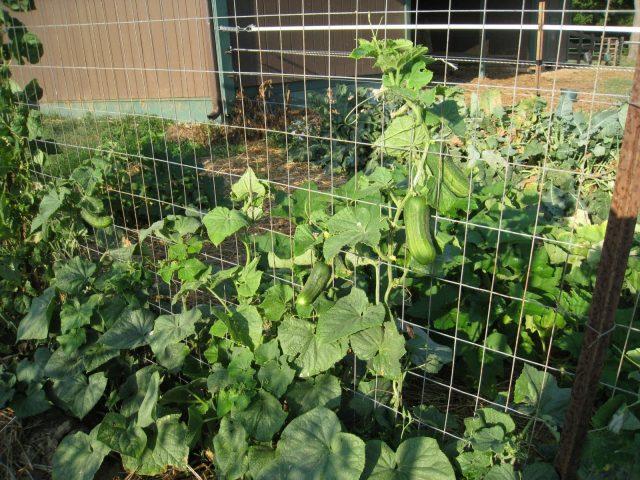
Cucumbers, both in the garden and in hydroponics, require support
The most difficult thing is to control and promptly adjust the concentration of the nutrient solution through regular pH and EC checks. If it increases, clean water is added to the tank; if it decreases, a complete nutrient solution is added.
Conclusion
DIY hydroponics for cucumbers, if done correctly, is not inferior in functionality to purchased systems and allows you to grow them both at home and in greenhouses. However, this method of cultivation requires adherence to the methodology, so the entire procedure as a whole, as well as its important nuances, must be studied in advance and the instructions strictly followed both in the preparation process and when caring for cucumbers in hydroponics.
